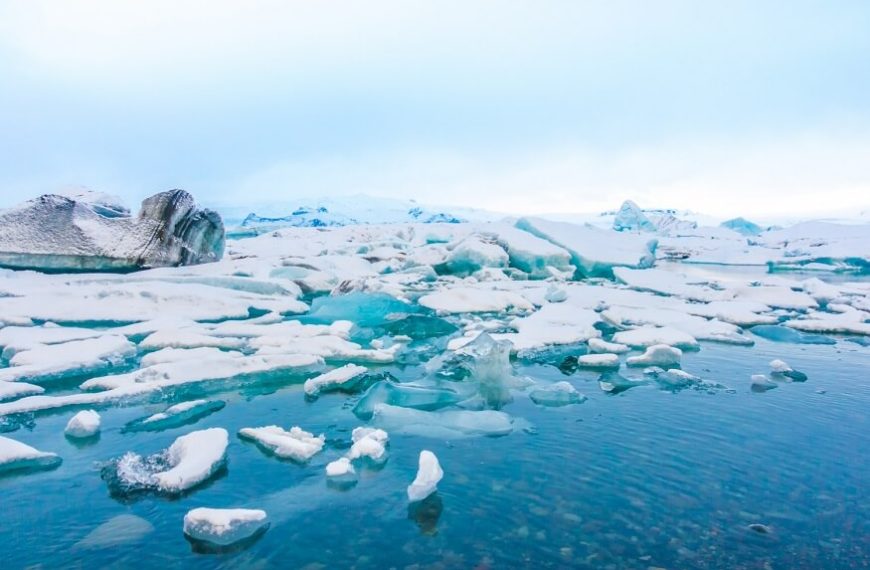Present a child with a globe that ‘spins’, and there is one thing they are sure to do. They will examine its bottom and top, with the utmost fascination. In this blog we will touch upon all questions pertinent to these remote places. We will take a look at Ice Formation, and answer the question, ‘What is a Glacier?’ Further, we will even uncover the different types of Glaciers. But first, let’s provide a more definitive answer to the question, ‘What is a Polar Region?’
Polar Regions: The Phenomena, Explained
What is a Polar Region? We know there are two found at the northernmost and southernmost tips of the globe, but what do we know beyond that?
For starters, the North Pole finds its place in the ‘Arctic’ region, and the ‘South Pole’ in the region of Antarctica. Needless to say, both are characterized by extremely cold temperatures. Indeed, such cold temperatures that they are rendered into a unique ecosystem that has its own distinct flora and fauna.
Children will be further delighted to know the following fact. Namely, ‘That the sun doesn’t set in the summer season in both the poles, and neither does the sun rise.’ The implications of this fact is, the North Pole and South Pole remain enshrouded in darkness for several months.
It is interesting to note here, that the average temperature in the Arctic is a chilly 0 degrees C in summer, and a freezing -40 degrees C in winter. In the case of its southern counterpart, Antarctica, one of the seven continents in the world, the summer temperature is -28 degrees C and winter, -60 degrees C.
Polar Regions: Ice Formation
Ice in the Sea? Now, that is something kids are going to be delighted to know all about! When talking about polar regions, it is only imperative that we speak of Ice Formation.
In layman terms, the ‘Ice’ that is found at the Poles, is referred to as ‘Polar Ice Caps.’ In a nutshell, these are the ‘areas of ice’ that are found on our planet’s poles. There are basically two kinds of this ‘polar ice.’ Namely, the following:
Land based Polar Ice Caps
This is the ice that is formed as a result of snow falling on the land. These are actually vast layers of ice that have been formed as a by-product of precipitation, over several thousands of years.
Cool Fact: The two places where these ice sheets are found are Greenland and Antarctica.
Sea Based Polar Ice Caps
When the sea freezes, these ice caps are formed. This is something that happens every season, a common occurrence at both poles.
Cool Fact: It is on account of this very phenomenon, that Antarctica literally ‘doubles’ its size every winter!
Glaciers, Explained
We have spoken about Ice in the Polar Regions, but what is a Glacier?
One of the best ways to explain glaciers to kids, is to present them with the following example. Tell them to imagine a snowball that is squeezed very hard. Right to the point where it becomes a ‘ball of ice.’ Tell them that this is the exact manner in which a glacier is formed!
Simply put, a Glacier is nothing short of being ‘a large mass of ice that stays frozen over time, and has the capacity to move.’ It is, in fact, a type of those ‘Land Based Polar Caps’ that we just discussed above.
So, how are Glaciers formed? There are some places where the ‘blanket of snow’ that falls each winter, does not completely melt. As a result, it gets very thick over time. The more snow that falls each year, the more of it is compressed into ice. Like, in the snowball example we touched upon earlier. It takes thousands of years before we can actually call these large chunks of ice, ‘Glaciers.’
The fact that glaciers can ‘move’, is what makes them all the more fascinating. It is ‘gravity’ that is responsible for moving glaciers down mountain slopes. At times, water finds itself reach the bottom of the glacier, and that makes it far easier for it to move. Over several thousands of years, glaciers move back and forth across the surface of the earth.
Note: As the earth’s climate is getting warmer, these glaciers are shrinking. It is common for scientists to refer to this phenomenon, when they are talking about climate change.
Glacier Speak: Types of Glaciers
Excited to learn even more about glaciers? In this final section, we will learn about the types of glaciers that can be found on planet Earth.
- Calving Glacier. This one finds itself in a body of water.
- Cirque Glacier.
- Polar Glacier.
- Valley Glacier.
- Hanging Glacier.
- Piedmont Glacier.
Note: This ‘body of water’ might be subject to tides. In that case, this glacier will be called a ‘Tidewater Glacier.’
Also called an Alpine Glacier or a Mountain Glacier, this one is found on the slopes of Mountains.
While all glaciers are essentially ‘polar’ glaciers, this one is only found in areas where the temperatures are perennially below freezing point.
When a glacier fills the valley that exists between two mountains.
This is the glacier formed on the side of a mountain that does not reach the valley that holds the main glacier.
This one flows into a plain that is situated at the edge of a mountain range.
At EuroKids we believe that the more interesting things are, the more children are eager to learn about them. And so it is with Polar Regions and Glaciers! When they learn more about them, they will uncover several interesting facts. Like, the water in the glass they drink from, might have once been ‘Ice in a Glacier!’















